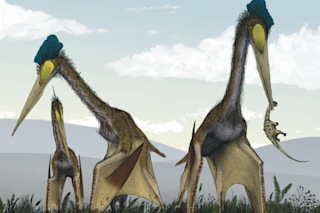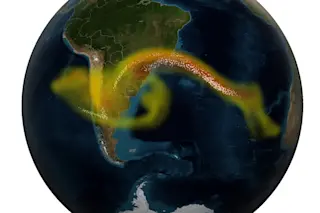Pterosaurs were more successful, evolutionarily speaking, than once believed, and were in their prime when done in by the same mass extinction that claimed the non-avian dinosaurs. (Credit Witton MP, Naish D (2008) A Reappraisal of Azhdarchid Pterosaur Functional Morphology and Paleoecology. PLoS ONE 3(5): e2271. doi:10.1371/journal.pone.0002271) While dinosaurs have a healthy hold on our imagination, their sky-sailing relatives the pterosaurs don't get nearly as much attention as they should. Maybe that's because researchers thought the flying reptiles were already declining in numbers and diversity well before the infamous End-Cretaceous mass extinction. New research out today says hold on: It appears pterosaurs were actually enjoying a heyday 66 million or so years ago, when a space rock and massive volcanic activity created a Very Bad Time for life on Earth. First things first: Pterosaurs were notdinosaurs. But they were related, as part of the same larger archosaur family tree that ...
The Glorious Twilight of Pterosaurs
Discover how new pterosaur fossils from Morocco reshape our understanding of pterosaur extinction and their diversity before mass extinction.
More on Discover
Stay Curious
SubscribeTo The Magazine
Save up to 40% off the cover price when you subscribe to Discover magazine.
Subscribe













